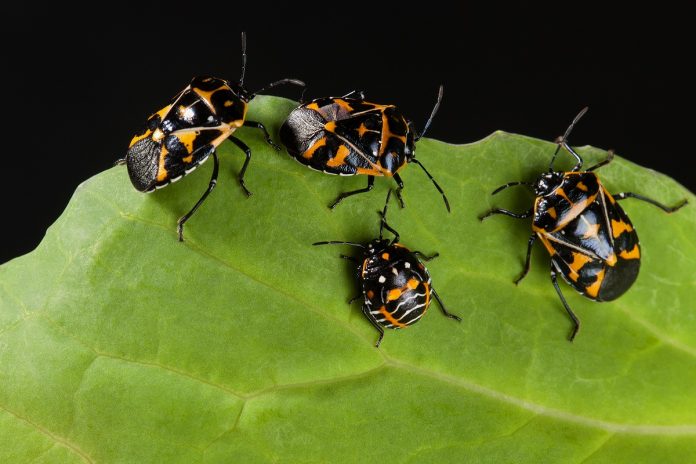Chris Bentley, Agricultural Research Service – U.S. Department of Agriculture, explains why research must continue to protect crops from pests and insects
Agricultural production in the U.S. and around the world is under constant attack. One of many enemies standing at the gate: thousands of different insect species. Left unchecked, they compete for the food we eat and represent threats that could decimate our natural, agricultural, and urban landscapes. If not for today’s pest control measures, insects would ruin many of the crops grown in the U.S.
Scientific research has provided a palette of measures and strategies to help farmers and ranchers, as well as gardeners, homeowners, and the general public, control these insect pests. Many of these innovative tools and techniques are the direct result of the U.S. Department of Agriculture’s (USDA) Agricultural Research Service (ARS).
Thanks to ARS scientists, many large-scale insect-related problems – like screwworm infestations of livestock – are no longer on America’s “need-to-worry-about” list. If not for the sterile-male insect release technique pioneered by ARS researchers Drs. Edward F. Knipling and Raymond C. Bushland more than 6 decades ago, the flesh-eating screwworm would have decimated U.S. livestock production – just as it does today for many of our Central and South American neighbours.
Unfortunately, science can’t rest on past successes. That’s because insects continue to invade, which researchers often learn about by comparing specimens to those maintained in the hundreds of ARS scientific collections. These collections provide a definitive resource for agricultural research to include the identification of invasive insects. Pests also evolve and are quite adept at developing countermeasures to overcome control methods designed for them. In turn, that requires ARS scientists to find newer and better approaches for controlling insects, a few of which are mentioned here.
Don’t let the harlequin bug’s red and black clown suit fool you. There is nothing funny about the way this pest can destroy a whole field of broccoli, Brussels sprouts, cauliflower, and other vegetables popular with urban and organic growers, as well as conventional farmers. ARS researchers are supercharging harlequin bug control.
It all involves a synthetic version of the insect’s own aggregation pheromone to use as a lure to either trap the bug directly or make so-called “trap crops” work efficiently. Pheromones are chemicals that trigger social responses in others of the same species. In this case, when a male harlequin bug finds food, he releases a pheromone to alert others to gather and feast – much like ringing a dinner bell.
When researchers tested a synthetic version of the pheromone on plants under conditions similar to farm fields, harlequin bugs – old and young, male and female – came crawling and flying from many yards away.
The technique allows growers to make trap crops – a lower-value alternative grown to lure pests away from higher-value crops – even more attractive.
Protecting cotton from stink bugs
Forget for a minute about the invasive brown marmorated stink bug that has become such a common pest in homes, backyards, and farms in recent years. Cotton growers in the U.S. are concerned about native stink bugs that have attacked cotton and other crops for decades.
ARS scientists have found environmentally friendly alternatives to insecticides for the 3 native stink bugs – namely, green (Chinavia hilaris), southern green (Nezara viridula), and brown (Euschistus servus) stink bugs – that continue to threaten U.S. cotton.
Thanks to ARS research, growers are now planting trap crops such as grain sorghum to lure stink bugs away from cotton. They’re using pheromone-baited traps to capture and kill stink bugs, and are planting nectar-producing plants – such as milkweed and buckwheat – to feed the stink bugs’ native enemy, a parasitoid wasp.
Applying beneficial nematodes to peach trees
Peach growers are facing a formidable insect foe: the lesser Peachtree borer, a native insect first reported in 1868 in Pennsylvania. ARS scientists have developed sustainable and cost-effective ways to combat this destructive pest.
Enter Steinernema carpocapsae, a tiny beneficial roundworm (or nematode) that can protect peach and other stone fruit trees by attacking borer pests. They are “beneficial” in that they control insect pests in an environmentally friendly way. But the sun’s ultraviolet rays and heat can dry and kill the roundworms after they’ve been applied. To survive the sun’s rays and do their job, these nematodes need protection.
ARS entomologists developed a way to protect the nematodes by using the type of “fire gel” that prevents the spread of fire in residential and commercial structures. In tests, they first sprayed nematodes onto tree limbs infested with lesser Peachtree borers and then applied the fire gel over them.
An initial drawback to that approach was overcome when one application (containing both nematode and protective gel) was developed. The treatment has proven as effective as the standard chemical approach to combating the problem. These are but a few examples of the many ways ARS researchers across the country are working to stay one step ahead of insects – all while tackling other issues that affect the productivity and wellbeing of our agricultural and natural resources.
As the sterile-male insect release technique mentioned earlier illustrates, a good piece of innovation can go a long, long way. This will become especially important as the world population swells to an estimated 8.5 billion by 2030. Fortunately, the spirit of scientific and technological excellence of ARS pioneers like Dr. Knipling and Dr. Bushland continues to burn brightly in today’s ARS researchers.
Christopher S. Bentley
Director of Communications
Agricultural Research Service – U.S. Department of Agriculture











